The City of Temporariness. A Report from Kramatorsk
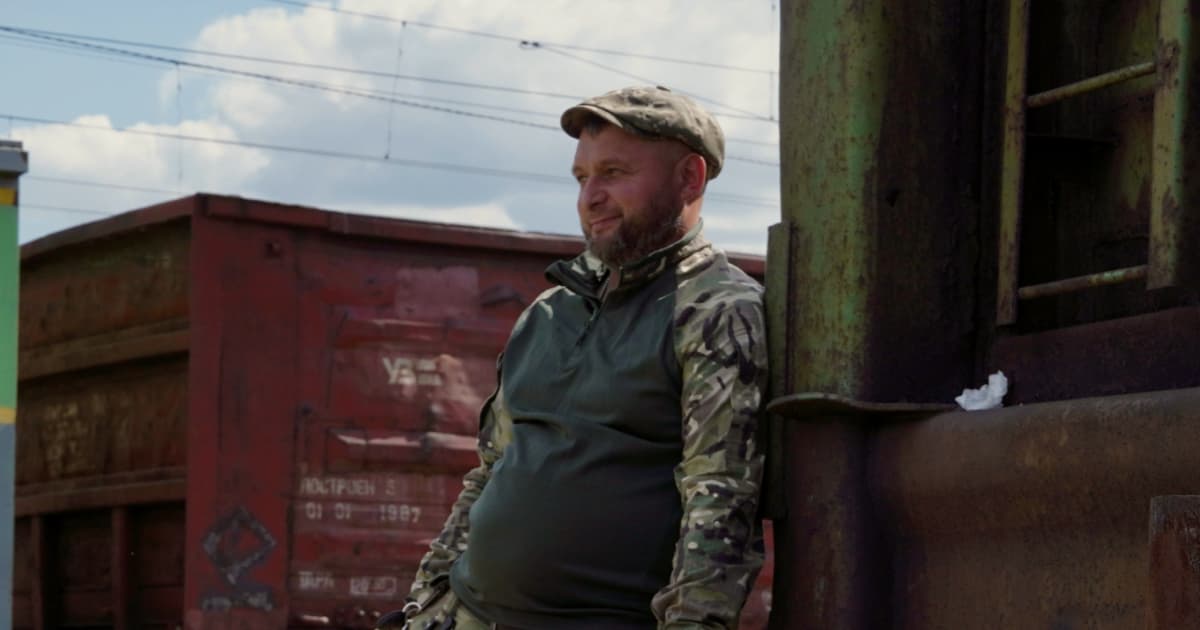
The further east you go, the more military men with big backpacks board the Kyiv — Kramatorsk train.
“Did you get any rest?”
“No, they just irritated me.”
Say two Ukrainian soldiers jokingly. They look under 25 years old. The men get into a khaki SUV and disappear into the stream of military vehicles on the road.
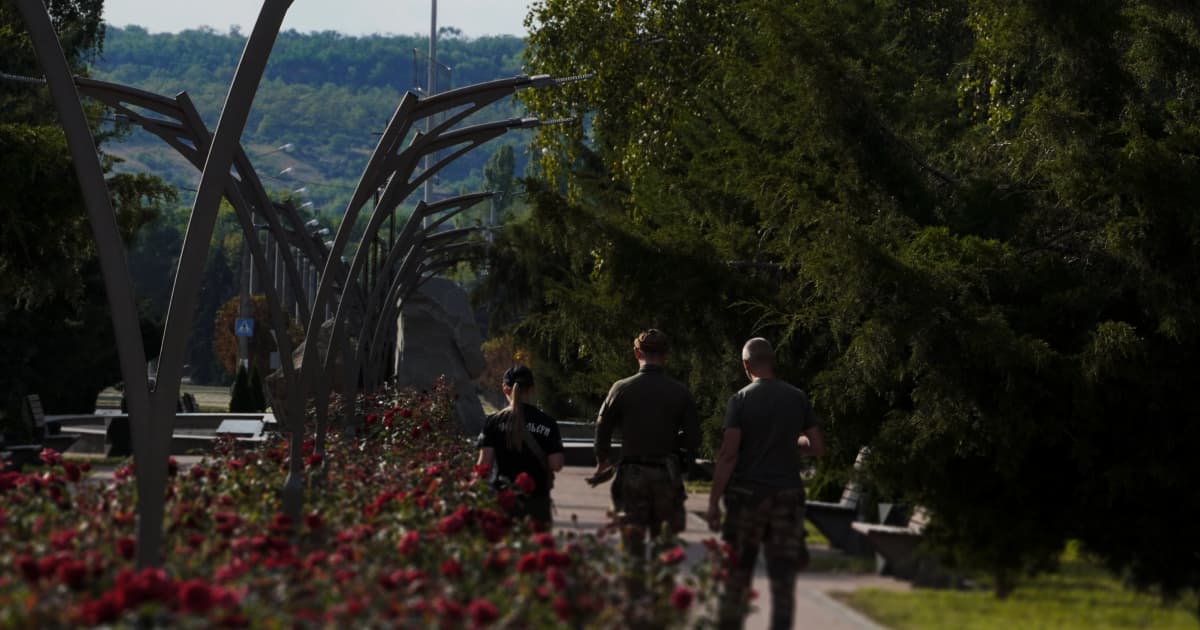
Kramatorsk is a bridge between civilian and frontline life. Instead of grocery stores, the railway station has a dozen cigarette counters where soldiers buy several packs at once. Instead of intercity buses, there are military vehicles that send or meet Ukrainian defenders.
Read about the life of frontline Kramatorsk in a report by Svidomi.
Las Vegas
"Crossing Parkova Street is permitted," "Crossing Vasyl Stus Street is prohibited" — you can hear the familiar tunes of the traffic lights sounds for the few pedestrians who move along the city's pavements. The roads are occupied by the military.
In the evening, the traffic lights stop flashing, and the light disappears from the streets. Street lamps and advertising signs have been quiet for months. You can still hear the noise of summer café terraces until 20:00 — most often military personnel, volunteers, or journalists are chatting — all in different languages: Ukrainian, Russian, or English.
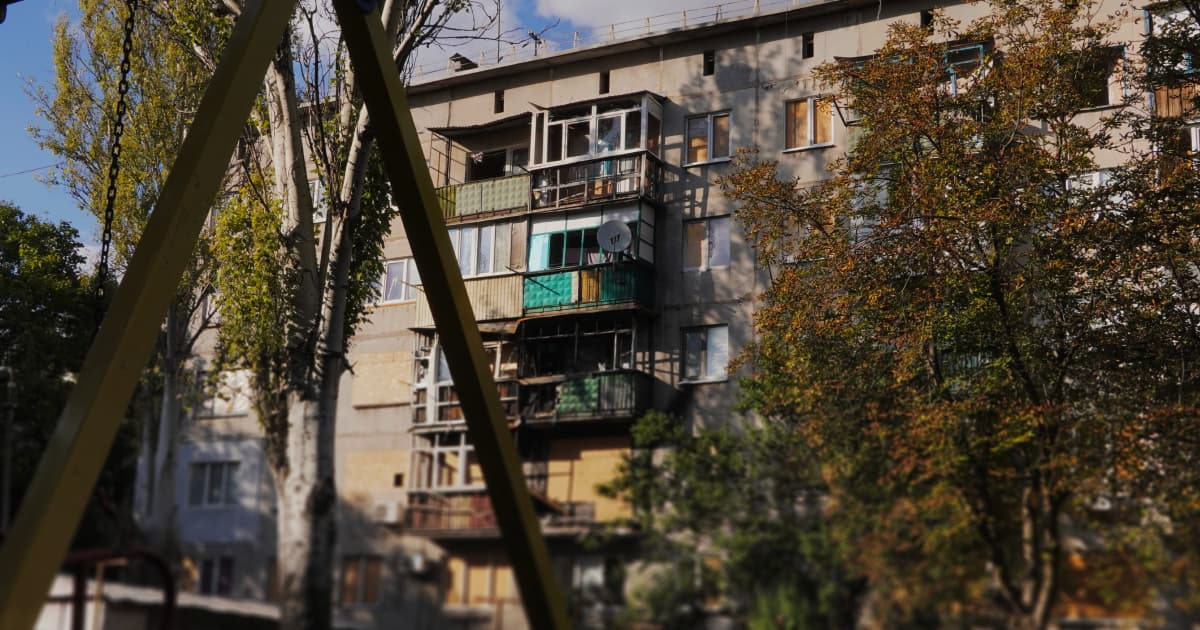
"How do you find living in the city now?"
"Like in Las Vegas," says Eduard, a member of the Vostok SOS evacuation team.
After the temporary occupation of Donetsk began in 2014, Kramatorsk became the administrative centre of the region. But the city has not always been a "Las Vegas." At the beginning of the full-scale war, due to the rapid advance of the Russians, cafés and restaurants closed down, and public transport stopped running. Even the lifts in the buildings were switched off, saying that they posed an additional danger to residents who might get stuck there during shelling.
Life began to return here in the autumn of 2022 after the de-occupation of the Kharkiv region. Back in May 2022, Vadym Denysenko, then an adviser to the Minister of Internal Affairs, said that Izium was a key road to Sloviansk and Kramatorsk. Izium was de-occupied on September 10, and a month later, Ukrainian Railways launched an Intercity train to Kramatorsk. Until now, the station has been closed after the Russians hit it with Tochka-U.
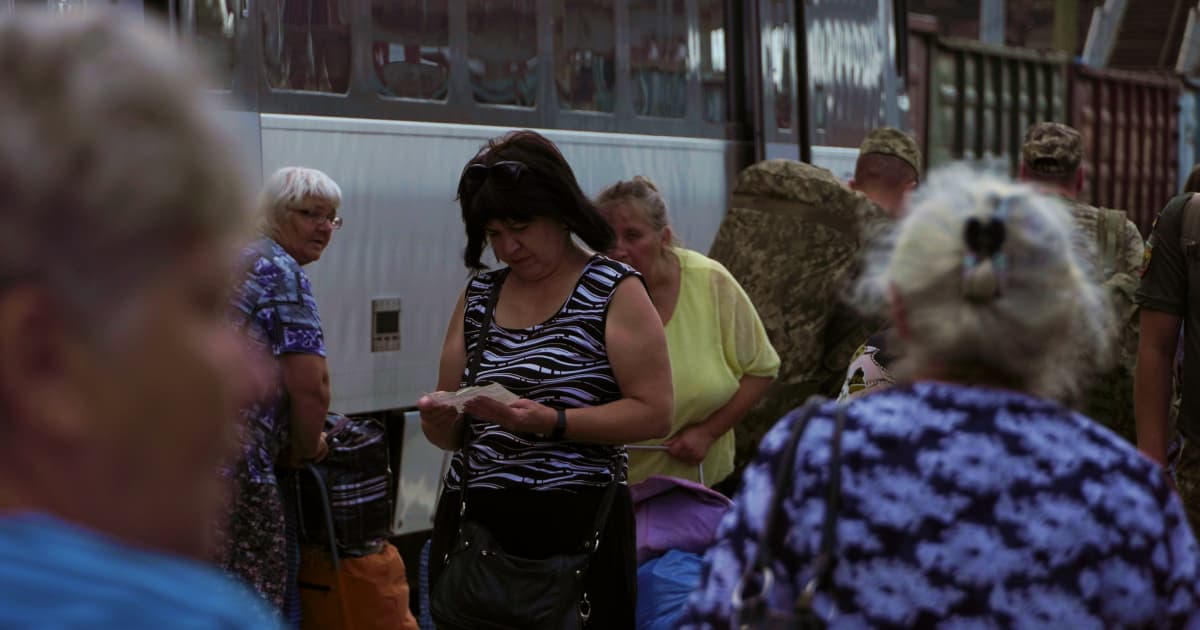
"From the beginning of the full-scale invasion to the launch of Intercity trains, it was like an exclusion zone here, and only the military were walking the streets. Everything seems to be getting better, but there are still missile attacks," says the volunteer.
Kramatorsk seems to be a city of temporariness. It is temporarily the centre of the region, there are temporarily many soldiers here, the city's residents have temporarily left, every other shop is temporarily closed, and there are temporary concrete shelters at bus stops.
The sense of stability is restored by people in neon light green vests mowing, sweeping, and watering lawns — utility workers clean up the almost deserted streets and parks every morning.
Independence Day
We arrived in Kramatorsk on Independence Day. A year before the full-scale invasion, over 26,000 people celebrated this day in Kramatorsk. In 2023, all the playgrounds are empty, and instead of thousands of people (before the full-scale invasion, there were about 150,000 people in the city — ed.), a mother and her son walk alone, a man walks his dog, a young couple takes pictures, and an elderly couple sunbathe on the riverbank.
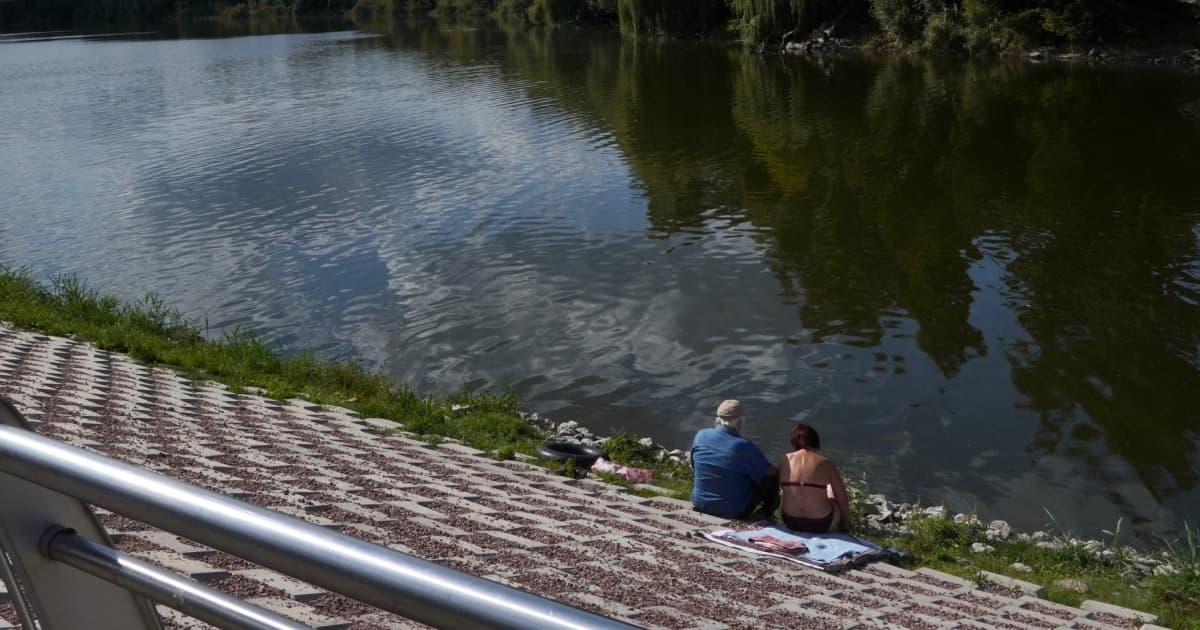
As in all Ukrainian cities, Independence Day is no longer a public event but an increased threat of Russian attacks. There are no celebrations on the main streets. But there is independence in the flags on houses, over the roads, on poles, and on the military's chevrons.
We found the celebration at the volunteer centre "Together to Victory". Since 2014, they have been weaving camouflage nets for the frontline. Colourful ornaments adorn the volunteers' white, yellow, and black vyshyvankas (embroidered shirts — TN). One by one, soldiers come to them to hug them, give them a cake, and present them with certificates of appreciation from their brigades.
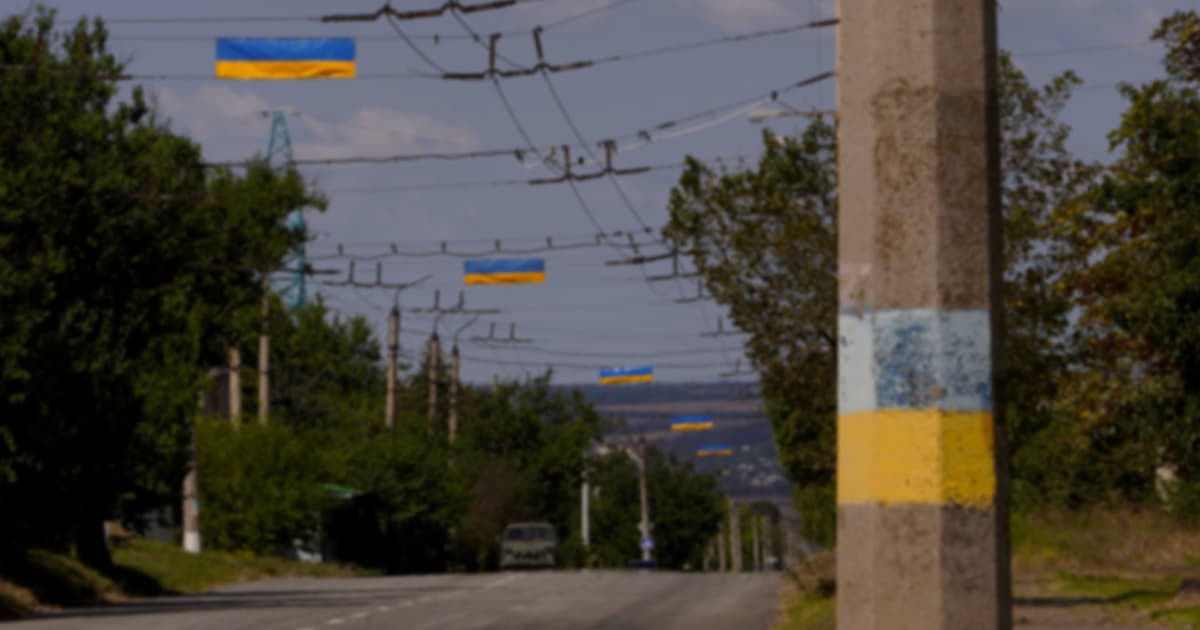
"Many of those who volunteered at the centre before the full-scale invasion evacuated and continue to work in our branches in western or central Ukraine. Since February 20, 2022, the Kramatorsk centre has been working without a break for 120 days. Not because there were more requests on the eve of the invasion, but because we came on Monday and did not stop working," says Nadiia Kalinchenkova, the centre's coordinator.
In addition to the nets, volunteers make helmet covers and sew flags that are launched by balloons into the temporarily occupied territories.
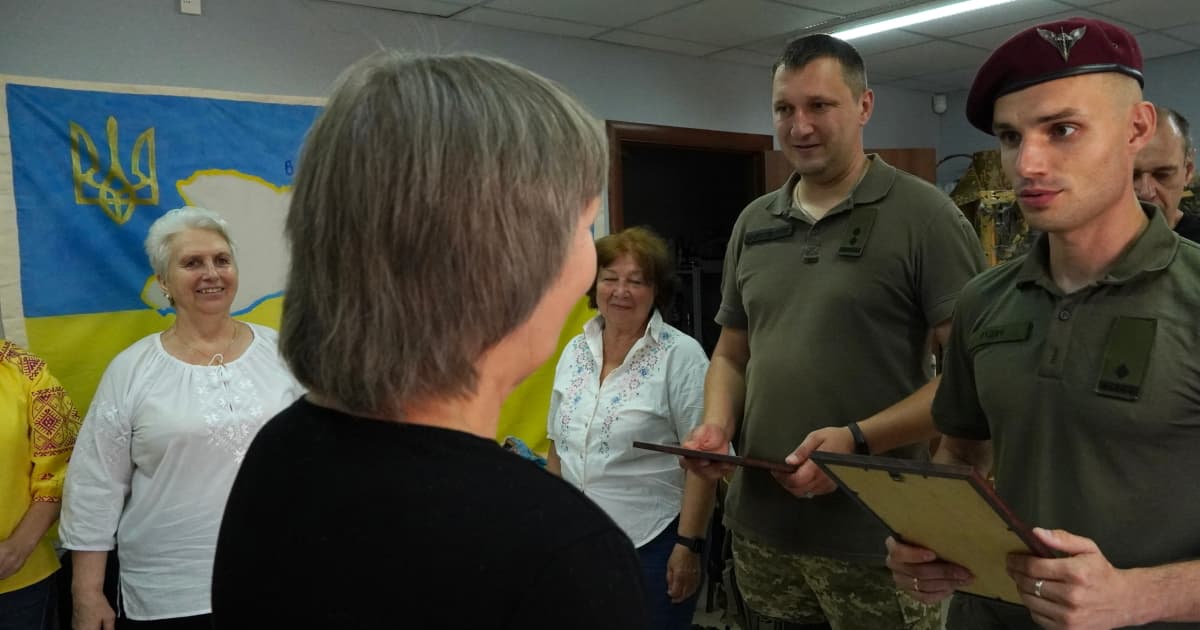
The city has become one of the hubs for distributing aid in the Donetsk region.
Cameras and online medical assistance
It is not only humanitarian aid that is being organised. Behind one almost destroyed building, life is bustling: a car park filled with cars, the noise of welding machines, and people bustling about. Behind the boarded-up and taped windows, behind the sandbag walls, the regional territorial medical association is working.
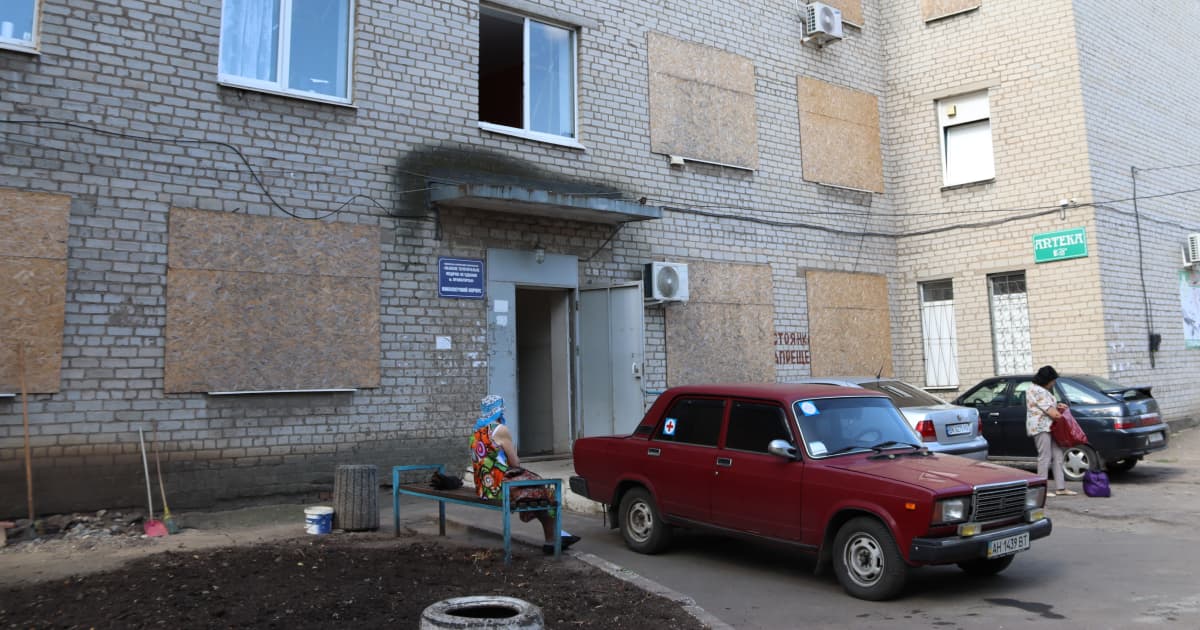
The hospital has already adapted to the shelling and is preparing for the winter: they have purchased generators and equipped the facility with an uninterruptible power supply.
The people inside say not only 'Good morning' but also congratulate each other on Independence Day. Before the full-scale invasion, it was a day off, but not today. The facility is packed with visitors, and the staff is scurrying around the three floors of the hospital to see everyone.
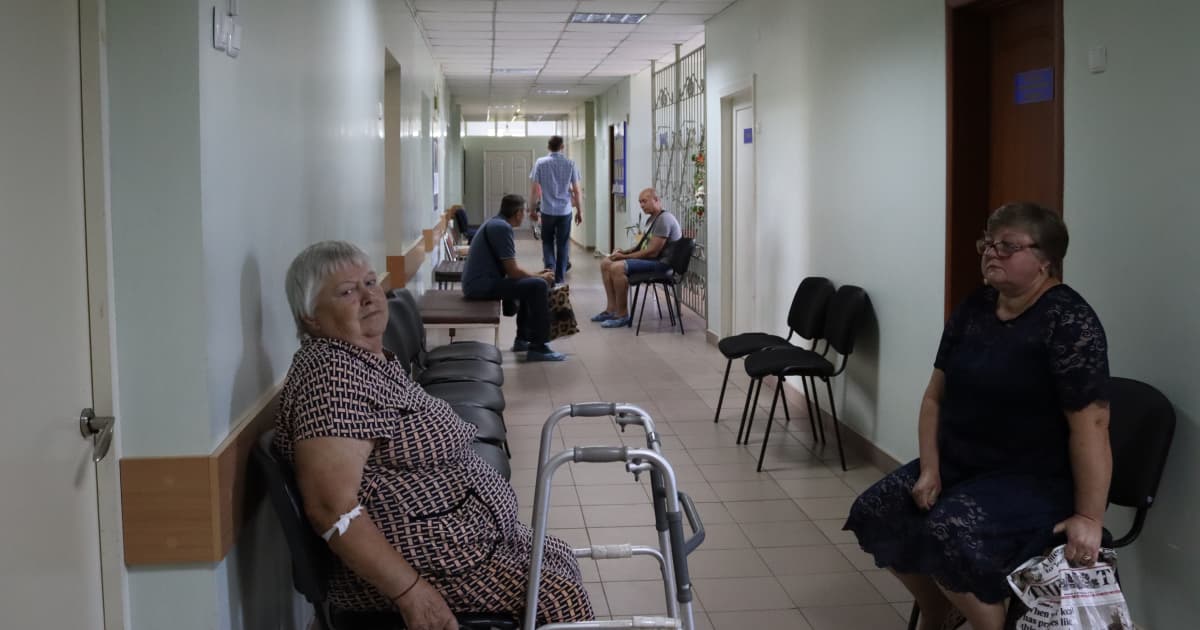
Despite the frontline nearby, the hospital has centres for modern oncology, cardiac surgery, haemodialysis, and a diagnostic centre.
As of August 2023, the hospital provides about 95% of the services it used to provide. The majority of the staff has been able to keep their jobs, says Oleksandr Heiko, head of the hospital. He meets us not in a medical coat but a white T-shirt and trousers. He talks about the hospital with enthusiasm. He speaks slowly and in detail, afraid of missing something important.
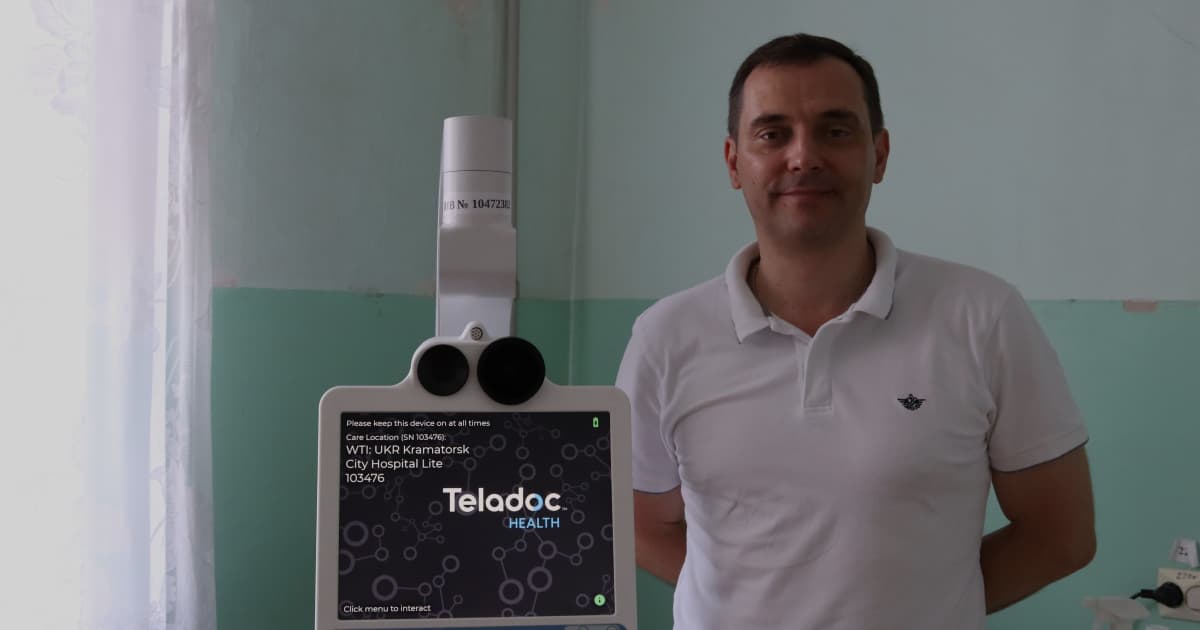
"Our main goal is to make sure that patients do not feel cut off from large hospitals and can receive a full range of medical care even in a not very populated town," says the chief of hospital.
He leads us to the telemedicine room where the patient's appointment has just ended. A few minutes later, urologist Yevhen Bahrai, who is located 1222 kilometres from Kramatorsk in Stryi, Lviv region, connects via video call. He consults patients here every day remotely.
He says such meetings differ from live appointments only by the presence of a screen. The person tells what is bothering them, then the doctor looks at the screen, moves it closer to the visitor, and writes down recommendations. To demonstrate the mechanism and effectiveness of such appointments, the doctor uses the monitor to identify the brand and model of the camera we are using to take the picture. The director explains this magic with high-quality camera systems.
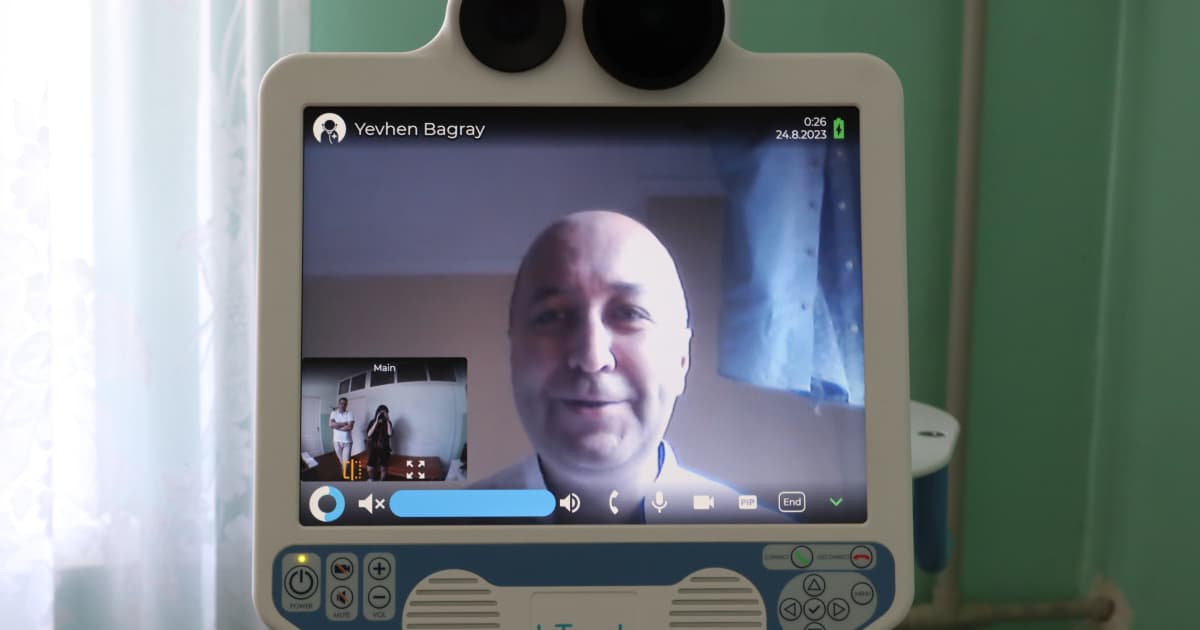
Finally, the director shows the hospital's development plan, which was to be implemented by the end of 2025 — one building where all departments of the medical association could operate. Before the full-scale war, there were several of them. This would help to provide consultations to a larger number of visitors. The new facility would also have a helicopter landing site for the rapid delivery of patients to other hospitals in the country.
At the beginning of the full-scale invasion, the foundations were already in place, but they were forced to stop construction. Instead, they continue to upgrade surgical rooms and purchase new equipment. All the departments could not be moved to the new facility, so they temporarily did so in another building. Because of this, most of the street seems empty, as all staff and visitors are in one place.
To remain at home till the end
Not only one street in Kramatorsk is empty, but on another, we notice a hunched grey-haired old woman dressed in a chequered dress with an apron, where she hides her apartment key. From time to time, she looks up at her apartment and continues to sweep up the rubble that has been there since August 31, 2022. That was when the Russians shelled Kramatorsk. As a result, 12 five-storey buildings were damaged, and an alley in the Family Park (formerly Pushkin Park — ed.) was destroyed.
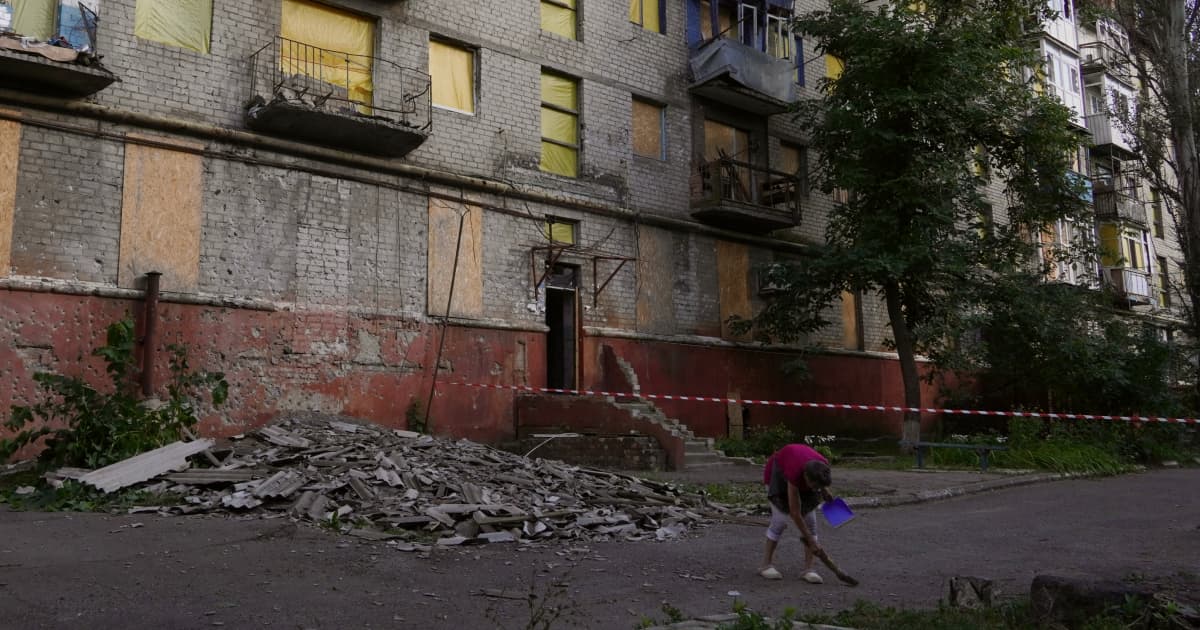
86-year-old Valentyna Chaika was in Kryvyi Rih at the time. It was only in June 2023 that she returned, and every day, she cleans up the rubble that the wind blows around her yard.
"I live on the fifth floor. Look, this is where you can see the biggest destruction,” we look up and see a completely destroyed balcony, broken windows, and a damaged roof. “You can come up to my place, and I'll show you everything," Valentyna says.
The apartment immediately smells damp. The walls are covered with mould — water has been pouring into the apartment during rains for over a year because of the destroyed roof. The windows are boarded up with plywood, there is no wallpaper in the room, and there are buckets and an electric stove near the walls where the woman cooks. There is no gas in the house.
"During a downpour, there are not enough dishes to collect water. People are happy when it rains, but I cry," she whispers.
The woman has two children: A 65-year-old son and a 63-year-old daughter who live abroad. Valentyna did not want to leave because the journey would be difficult for her. In March 2022, she evacuated to her relatives in the Kyiv region and then to Kryvyi Rih. Later, she returned to Kramatorsk to look after her apartment and live in her hometown.
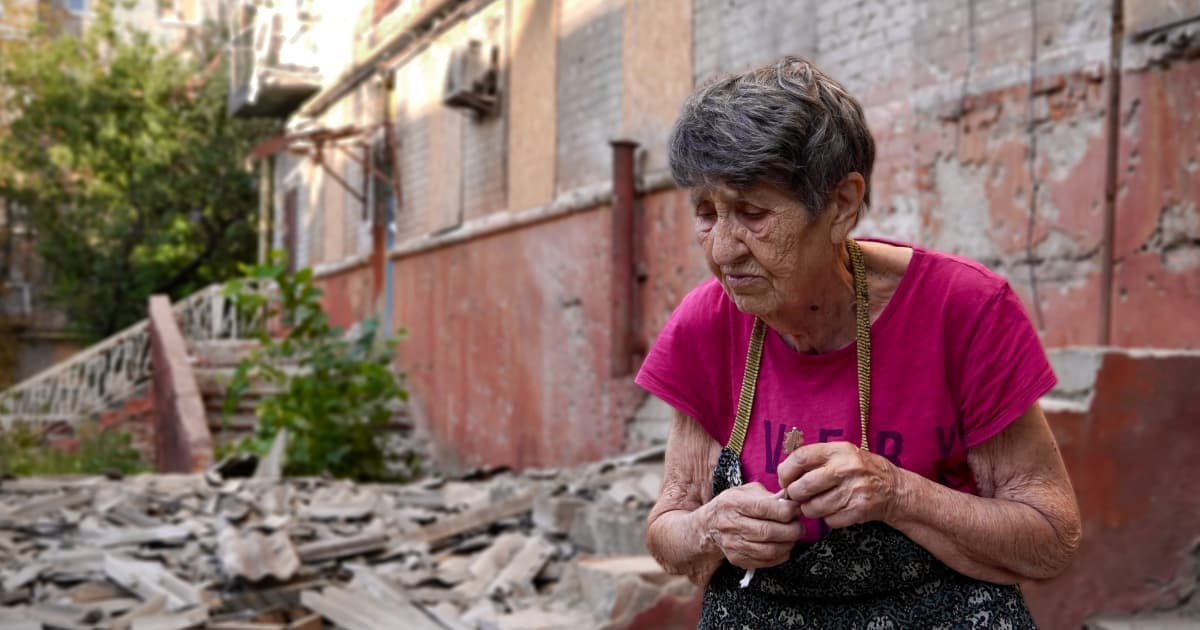
"I spent everything I had saved for my death. I paid over 4000 hryvnias for the door alone. I'm scared to die because if they give me two more pensions, it will only be enough to dig a hole. There will be no money for a coffin," Valentyna trembles and sniffs her nose.
Young people near the frontline
It is rare to see teenagers in the city, who usually walk in the parks on warm evenings. Daria Panchenko, 20, says that almost all of her peers have left because there are no opportunities for development. She is a sociology student at Karazin Kharkiv National University. After February 24, she went to the UK but has since returned to Ukraine and lives in Kyiv.
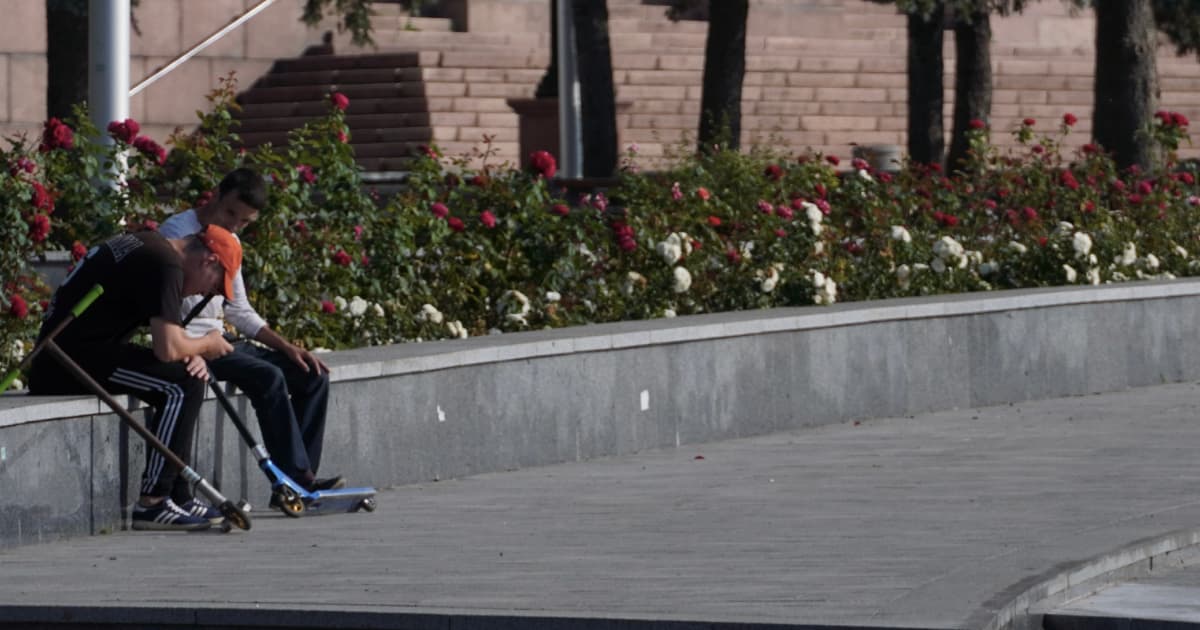
"The city is mostly populated by military personnel and people over 30," says Daria.
When we ask about places popular with young people, she says that the locals used to hang out mostly at Ria Pizza in the city centre because it is both a cafe and a club. Her high school graduation was celebrated there. The club's dark room was lit up with purple neon LED strips, and Daria and her peers were starting to make plans for the future.
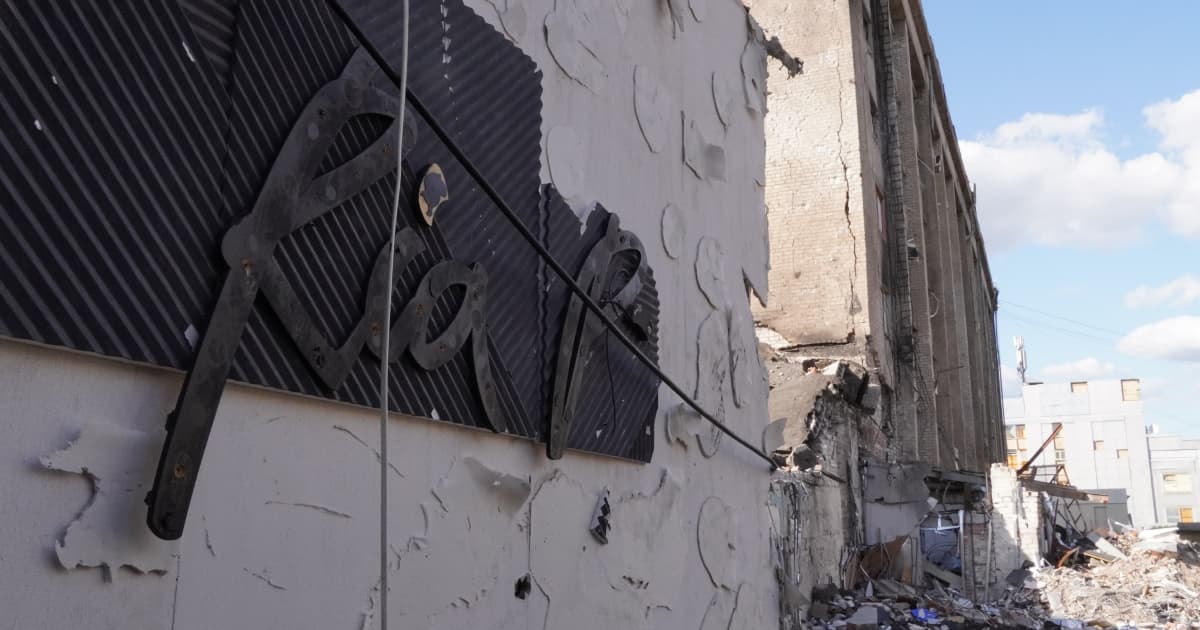
On June 27, Russian troops destroyed the place of memories and plans for the future by launching a missile attack on the establishment. 13 people were killed, including the writer Viktoria Amelina, and 65 people were injured.
Today, it is a burnt-out box with fragments of walls, roof, and furniture. The sign on the information board can be seen, and one of the surviving counters has a glass and a bottle filled with water, which probably remained there since the last hours of the café's work.
Saving lives
During the attack, the Vostok SOS evacuation team happened to be in the area of Ria Pizza, and they helped to clear the rubble and rescue people. We meet them in a cafe near Yuvileinyi Park, drinking milkshakes and non-alcoholic mojitos. These seem to be the most popular drinks in hot Kramatorsk.
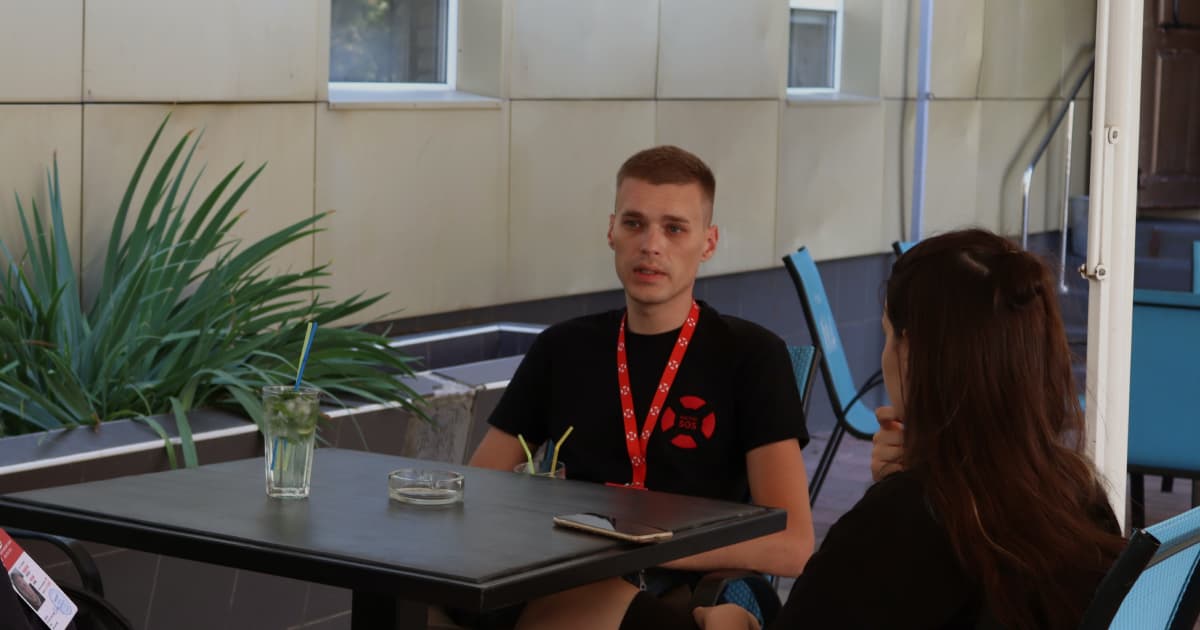
Eduard Skoryk and Vladyslav Arsenii have just returned from another trip to Toretsk and Kostiantynivka. Today they evacuated three women — one of them is bedridden.
"We specialise in people with limited mobility and take them from the Donetsk region to Pokrovsk. From there, they are taken by evacuation train to Dnipro, where they are met by other volunteers," the men say.
People are evacuated after the hotline receives requests from relatives, neighbours, or social workers. Currently, there is one team working in the Donetsk region, making several trips a week. A year ago, before the de-occupation of the Kharkiv region and Lyman in the Donetsk region, three or four teams made trips every day.
The men are based in Kramatorsk. Eduard is from Bakhmut and started evacuating in March 2022. Vladyslav is from Donetsk. After the occupation of the city, he lived in Kyiv, and at the start of the full-scale war, he took his family abroad and joined the volunteers as a driver.
He says the exact date he joined the Vostok SOS team was April 10, 2022.
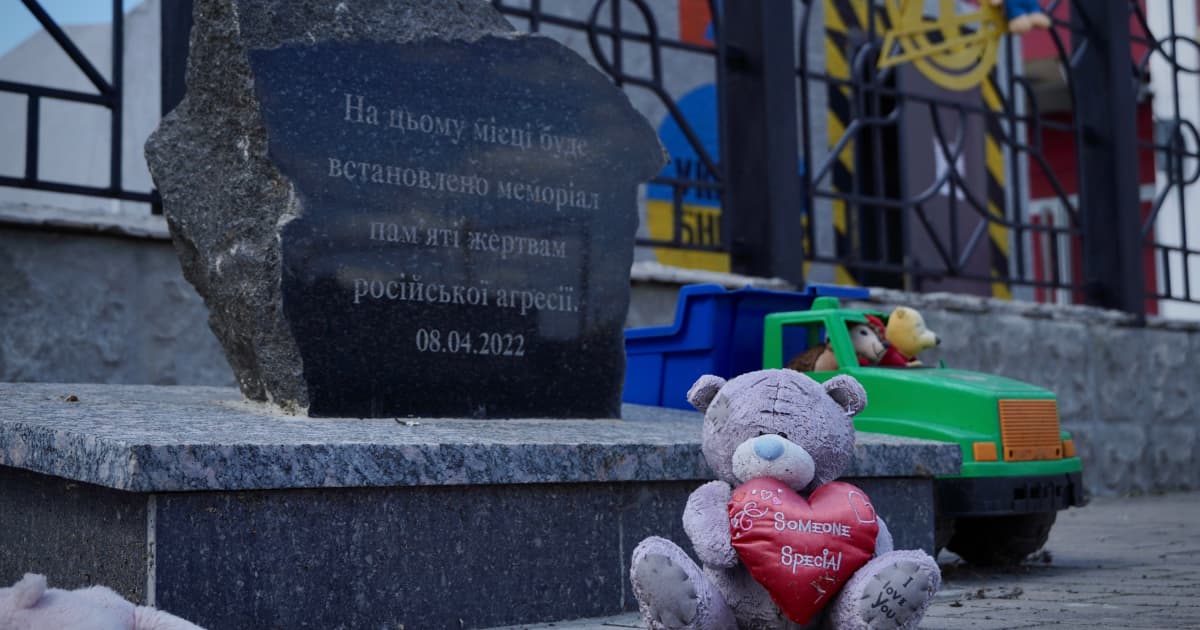
"On April 8, the railway station was shelled (the Russians attacked just as people were waiting for an evacuation train. 61 people were killed and 121 injured — ed.), and evacuation trains stopped running from here. My wife is from Kramatorsk, I can live in her parents' apartment and I know the area, so I decided to stay in the city and evacuate people," Vladyslav says.
To meet and say goodbye
Kramatorsk railway station is the end point of the Donetsk region for trains and the starting point for people in camouflage who will go deep into the east to defend their homeland.
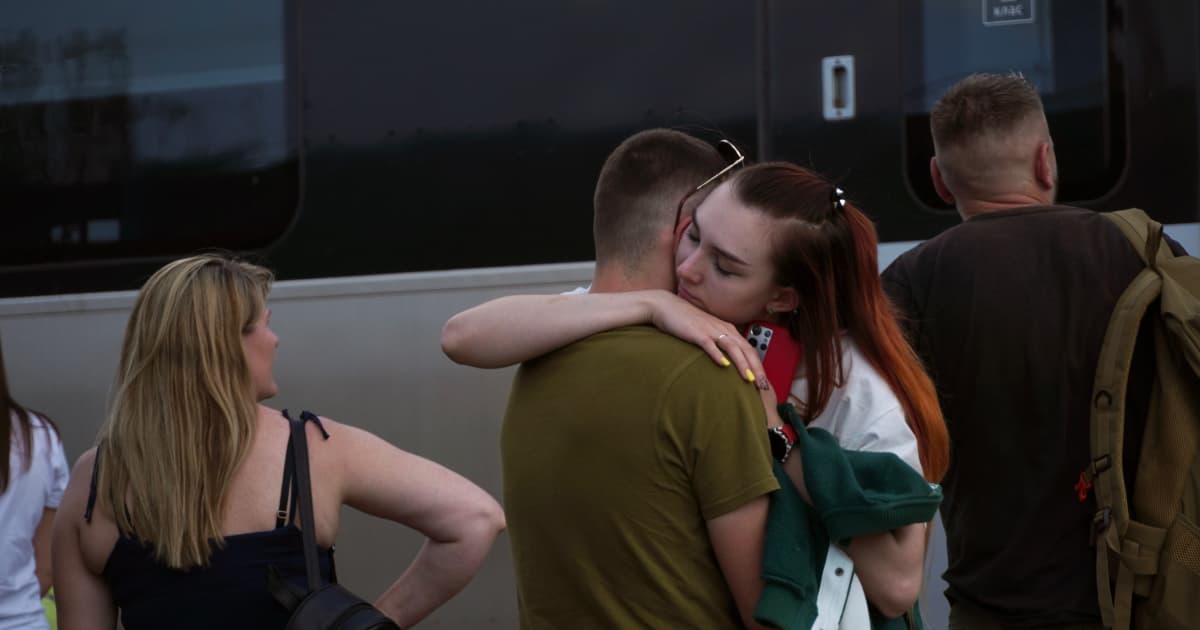
It is the meeting point for Serhii, who stands on the platform with flowers, breaks into a smile, and says in a gentle, childlike voice that his wife is coming to see him. The train arrives on the platform, and Serhii rushes to find Olena's carriage as soon as possible. She is a flight attendant and has been trying to come to her husband every few months to spend some time together.
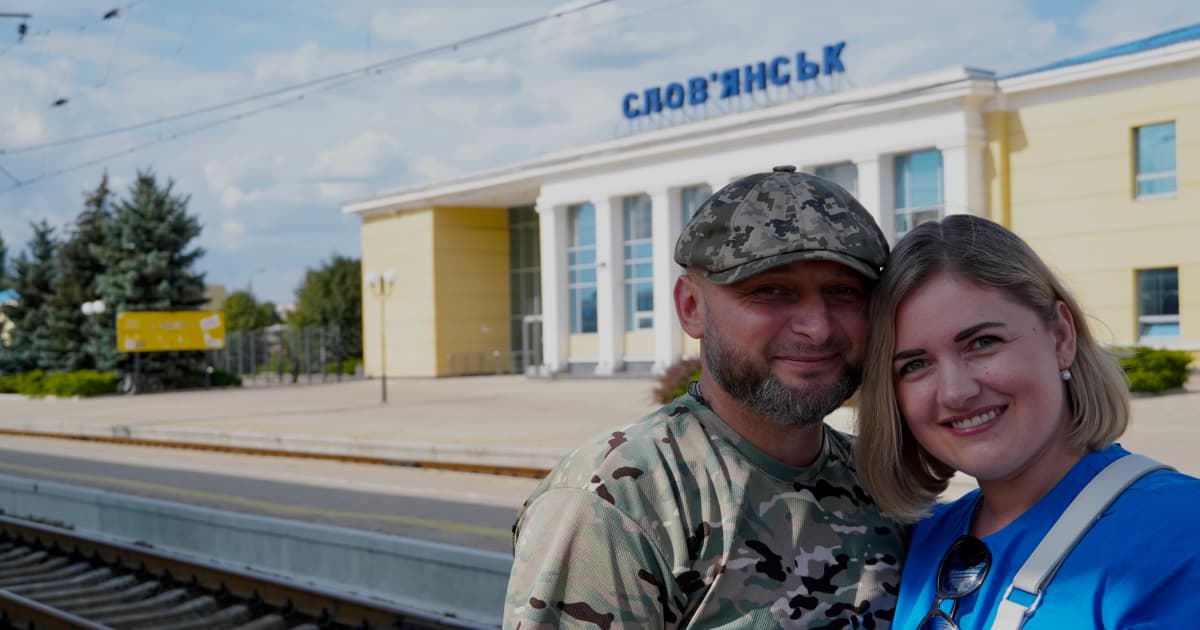
The next day, we meet them by chance at the Sloviansk railway station — they are seeing their friend off to the train to the capital.
We see that the railway tracks in the Donetsk region are arteries that connect the lives of Ukrainians on both sides of reality.


